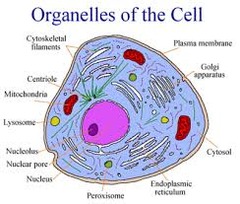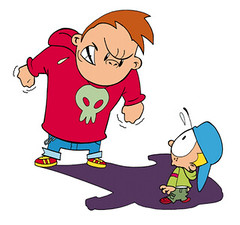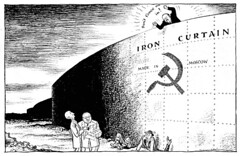| 9770690559 | Accent | A distinctive mode of pronunciation of a language, especially one associated with a particular nation, locality, or social class. | | 0 |
| 9770690560 | Dialect | A regional variation of a language distinguished by vocabulary, spelling, and pronunciation, particular to a specific region or social group. |  | 1 |
| 9770690561 | Extinct Language | A language that no longer has any speakers, or that is no longer in current use. |  | 2 |
| 9770690562 | Ideogram | A written character symbolizing the idea of a thing without indicating the sounds used to say it. Used in Mandarin (Chinese) |  | 3 |
| 9770690563 | Isogloss | A geographic boundary line delimiting the area in which a given linguistic feature occurs. |  | 4 |
| 9770690564 | Isolated Language | A natural language with no demonstrable genealogical (or "genetic") relationship with other languages or language families; that is, one that has not been demonstrated to descend from an ancestor common with any other language. i.e A language family with only one language. (Basque) |  | 5 |
| 9770690565 | Language Branch | A Subsection of a Language Family. Differences are not as extensive or old as with language families. i.e The Romance "-------" of the Indo-European language family. |  | 6 |
| 9770690566 | Language | The method of human communication, either spoken or written, consisting of the use of words in a structured and conventional way. |  | 7 |
| 9770690567 | Language Group | A Collection of languages within a branch that share a common origin in the relatively recent past and display relatively few differences in grammar and vocabulary. An individual language, including all dialects (I.e. Italian, German, English) |  | 8 |
| 9770690568 | Language Family | A collection of languages related to each other through a common ancestor long before recorded history. The trunk of the language tree, from which language branches come from. |  | 9 |
| 9770690569 | Indo European language family | Largest language family that includes English and most other languages in the Western Hemisphere. Also used in South and Southwest Asia. Includes the Germanic branch, Indo-Iranian branch, Balto-Slavic branch, and Romance branch. |  | 10 |
| 9770690570 | Sino-Tibetan Language Family | 2nd largest language family. Includes Madarin, Thai, Cantonese and Burmese |  | 11 |
| 9770690571 | Lingua Franca | A Language mutually understood and commonly used in trade by people who have different native languages (currently English worldwide). |  | 12 |
| 9770690572 | Literary Tradition | A Language that is written as well as spoken. | | 13 |
| 9770690573 | Monolingual State | A country in which only one language is spoken (i.e. Japan, Korea) |  | 14 |
| 9770690574 | Bilingual | The ability to speak two languages. |  | 15 |
| 9770690575 | Multilingual State | A country in which more than one language is in use (India, Nigeria, Belgium, Switzerland) |  | 16 |
| 9770690576 | Official Language | The language adopted for use by the government for the conduct of business and publication of documents, a language that is given special legal status. |  | 17 |
| 9770690577 | Orthography | The conventional spelling system of a language. |  | 18 |
| 9770690578 | Pidgin Language | A Form of speech that adopts a simplified grammar and limited vocabulary of a lingua franca, used for communications among speakers of two different languages. |  | 19 |
| 9770690579 | Standard Language | The specific form of a language used for official government business, education, and mass communications. |  | 20 |
| 9770690580 | Toponym | The name of a place, often reflecting that place's history and culture. |  | 21 |
| 9770690581 | Vernacular | Using a language or dialect native to a region or country rather than a literary, cultured, or foreign language. It is usually the language of the common people. | | 22 |
| 9770690584 | Creole | A language that results from the mixing of a colonizer's language with the indigenous language of the people being dominated. Developed out of an earlier pidgin stage. |  | 23 |
| 9770690585 | Denglish | The term is used in all German-speaking countries to refer to the increasingly strong influx of English or pseudo-English vocabulary into German. |  | 24 |
| 9770690586 | Franglais | A form of French using many words and idioms borrowed from English. |  | 25 |
| 9770690587 | Ebonics | A dialect of English spoken by some African Americans. |  | 26 |
| 9770690588 | Spanglish | A hybrid language combining words and idioms from both Spanish and English, especially Spanish speech that uses many English words and expressions. |  | 27 |
| 9770690589 | Francophone | Places and countries where French is spoken around the world. (Quebec in Canada, Vietnam, Haiti, Sub-Saharan Africa, Belgium, Switzerland, France). | | 28 |
| 9770690590 | Hankul | The system of writing Korean is written in. In this system, each letter represents a sound. | | 29 |
| 9770690591 | Romance Branch | A language branch of the Indo-European Language Family. This branch includes languages that evolved from Latin (the language of the Romans). The 5 main languages include: Spanish, Portuguese, French, Italian, and Romanian. | | 30 |
| 9770690592 | Germanic Branch | A language branch of the Indo-European Language Family. This branch is divided into North and West Germanic.
North Germanic includes Scandinavian languages (Swedish, Danish, Norwegian, Icelandic), which all came from Old Norse.
West Germanic is further divided into High Germanic and Low Germanic subgroups. High German includes the standard German language. Low German includes English, Dutch, Flemish (Dialect of Dutch), Afrikaaans, and Frisian. | | 31 |
| 9770690593 | Indo-Iranian Branch | The branch of the Indo-European language family with the most speakers. This branch includes more than 100 individual languages divided into an eastern group (Indic), which includes the languages of Hinid and Urdu and a western group (Iranian), which includes Farsi and Kurdish. | | 32 |
| 9770690594 | Balto-Slavic Branch | This branch of the Indo-European language family can be broken down into four groups: East Slavic (Russian, Ukrainian, Belarusian), Baltic (Latvian, Lithuanian), West Slavic (Polish, Czech, and Slovak), and South Slavic (Serbo-Croatian). Russian is the most widely used language in this branch, due to the spread of the Soviet Union. | | 33 |
| 9770690595 | Celtic Branch | A language branch of the Indo-European Language Family. This branch includes the languages of the British Isles before the invasion of the Angles, Saxons, and Jutes. This branch is divided into two language groups: Goidelic(Gaelic), which includes Irish Gaelic and Scottish Gaelic, and Brythonic, which includes Welsh, Breton, and Cornish. These languages declined because the Celts lost most of their territory and the English colonizers forbid the use of the Celtic languages. | | 34 |
| 9770690596 | Uralic Language Family | Language Family in Europe that includes the languages of Estonian, Finnish, and Hungarian. Languages in this family originated from the Ural mountains in Russia, spreading through migration. | | 35 |
| 9770690597 | Austronesian Language Family | Language Family spoken mostly in Indonesia. This family includes the languages of Javanese, Indonesian, Malay, and Malagasy. The most spoken language in this family is Javanese, since Java is the populous island of Indonesia. The Indonesian language is used as a lingua franca in Indonesia, due to so many different native languages (739 active languages). Malay is spoken in Malaysia, Malagasy is spoken in Madagascar. | | 36 |
| 9770690598 | Afro-Asiatic Language Family | This language family is found in northern Africa and southwestern Asia (Middle East), where Islam is the dominant religion. This family includes the languages of Arabic and Hebrew. Hebrew is spoken in Israel, a Jewish state, and Arabic is spoken throughout the region since it is the language of the Koran, the Islamic holy book. | | 37 |
| 9770690599 | Niger-Congo Language Family | More than 95% of people in Sub-Saharan Africa speak languages from this family. This family includes Swahili, the lingua franca in Africa, used by many to communicate as a second language, due to so many different native languages. | | 38 |
| 9770690600 | Prehistoric Subgroup | A language that predates the current language family, before the written record. Ex: Proto-Indo-European | | 39 |
| 9770690601 | Altaic Language Family | A language family spoken across central Asia named after the Altai Mountains. The most spoken language in this family is Turkish. The family also includes the languages spoken in the Caucasus Region and across Central Asia, previously controlled by the Soviet Union. With the collapse of the Soviet Union, newly independent countries in these regions reverted to their native languages in this family, including the countries of Azerbaijan, Kazakhstan, Kyrgyzstan, Turkmenistan, Uzbekistan, Mongolia and Georgia. | | 40 |
| 9770690602 | Kurgan Theory | Proposed by Marija Gimbutas, this theory argues the Proto-Indo-European language diffused by military conquest as nomadic herders on horseback (Kurgans) invaded west from the Asian Steppe ( border between Russia and Kazakhstan) around 4300 B.C in search of grasslands. | | 41 |
| 9770690603 | Renfrew (Anatolian) Theory | Proposed by Colin renfrew, this theory argues the Proto-Indo-European language diffused by way of agriculktural practices from Anatolia (Turkey) in 6300 BC. | | 42 |
| 9770690604 | British Received Pronunciation (BRP) | The dialect of English associated with upper class Britons living in the London area now considered the
standard form of British speech. | | 43 |
| 9770690605 | Language Divergence | When a lack of spatial interaction (isolation) among speakers of a language breaks the language into
dialects and then new languages. | | 44 |
| 9770690606 | Language Convergence | When peoples with different languages have consistent spatial interaction and their languages collapse
into one (i.e. pidgin and creole). | | 45 |
| 9770690607 | Backward Reconstruction | When linguists track sound shifts and the hardening of consonants backward to reveal an "original"
language. | | 46 |
| 9770690608 | Sound Shift | Slight word change in language within the subfamilies and language family from present time, backward
to its origin (i.e: lacte in Latin, latta in Italian). | | 47 |
| 9770690609 | Treaty of Tordesillas | Pope Alexander VI's 1493 decision that officially split the New World into two empires, with Spain
getting the West and Portugal the East. | | 48 |
| 9770690610 | Hindi | Approximately one-third of Indians, mostly in the north, use this Indic language. This language can be spoken in many different ways, but there is only one official way to write the language, using a script called Devanagari. It serves as the lingua franca in India and is used by the government, growing into a national language in the nineteenth century when the British encouraged its use in government. It is part of the Indo-Iranian branch. | | 49 |
| 9770690611 | Swahili | The lingua franca in Africa, used by many to communicate as a second language, due to so many different native languages. This language was developed between African and Arab traders and is one for the few African languages with extensive literature. It is part of the Niger-Congo language family. | | 50 |
| 9770690612 | Urdu | Pakistan's principal language, spoken very much like Hindi but written with the Arabic alphabet, a legacy of the fact that most Pakistanis are Muslims, and their holiest book (the Quran) is written in Arabic. It is part of the Indo-Iranian branch. | | 51 |
| 9770690613 | Farsi | The principle language of Iran, a remnant of the Persian Empire. It is written with the Arabic alphabet since Iran is a Muslim country. This language is part of the Indo-Iranian branch. | | 52 |
| 9770690614 | Mandarin | This language is the most spoken language in the world. It is spoken by approximately three-fourths of the Chinese people, and is used by the Chinese government. There is no single Chinese language. Instead of letters, Chinese languages use ideograms (characters) that mostly represent concepts rather than sounds. | | 53 |
| 9770690615 | Arabic | This language serves as a unifying force� in the Middle East (Northern Africa and Southwest Asia), typically referred to as the Arab World. This language is the language of Islam (used in the Koran),, which is predominant throughout the region. This language belongs to the Afro-Asiatic language family and is the official language in two dozen countries of North Africa and southwestern Asia, from Morocco to the Arabian Peninsula. | | 54 |
| 9770690616 | Hebrew | This language was an extinct language that has been revived. It diminished in use in the fourth century B.C. and was thereafter retained only for Jewish religious services. When Israel was established in 1948, this language became one of the new country's two official languages, along with Arabic. This language was chosen to unify the Jews of Israel and give them a sense of nationalism, since Israel was created by Jewish refugees and migrants who spoke many different languages. Reviving this language required the creation of many new words for the modern world. | | 55 |
| 9770690617 | Irish Gaelic | This is one of the two official languages of Ireland, along with English. This language was forbidden under English rule. When Ireland got their independence form England in 1922, this language became an important part of their cultural identity and sense of nationalism and became a compulsory course in all public schools and required for public service jobs. | | 56 |
| 9770690618 | Basque | Also known as Euskera, this isolated language predates the Indo-European language and is not related to any other language family in Europe. Spoken in the Pyrenees Mountains (between Spain and France), the mountainous homeland created isolation, making the preservation of the language possible. | | 57 |
| 9770690619 | Welsh | This is one of the two official languages of Wales, along with English. This language was forbidden under English rule, but has been revived in recent years. This language is a compulsory subject in all schools in Wales and knowledge of the language is now required for many jobs in Wales. Bilingual signs and television and radio programs have also been added to help preserve this language. | | 58 |
| 9770690620 | Inuktitut | The language spoken by the Inuits (indigenous tribe) of northern Canada. It is recognized as an official language, along with English and French in Nunavut, the Inuit territory of Canada. Similar to the Celtic languages, it has declined with the forces of globalization and is undergoing a revival since it is an important part of the Inuit culture and is taught in schools and represented on bilingual signs and in the government. | | 59 |
| 9770690621 | Globalization | The process by which businesses or other organizations develop international influence and operate on an international scale. Currently, America dominates the world with multinational corporations and media, which has made English the world's current lingua franca (international language of business). | | 60 |
| 9770690622 | Quebec | This province in Canada primarily speaks French, due to its history of colonization. As a result, Canada is officially bilingual, recognizing both English and French as official languages. | | 61 |
| 9770690623 | Vulgar Latin | This language was spoken by the Roman army at the time of occupation and is the basis of the Romance languages, which evolved out of this language overtime due to isolation. | | 62 |
| 9770690624 | Latin America | This region of the Americas primarily speaks Romance Languages, which derived from Latin. Brazil speaks Portuguese, Haiti and French Guiana speak French, while the majority of the other countries speak Spanish, all due to the patterns of colonization. | | 63 |
| 9770690625 | Belgium | This multilingual state in Europe, which is part of the francophone world, has experienced tensions between its two language groups. The Flemings
live in the north province Flanders and speak Flemish, a Dutch dialect. The Walloons live in the south province Wallonia and speak French. Brussels, the capital city if officially bilingual to create a since of unity in the country.
Antagonism between the Flemings and Walloons is aggravated by economic and political differences.
Historically, the Walloons dominated Belgium's economy and politics and French was the official state language. | | 64 |
| 9770690626 | Switzerland | This multilingual state in Europe, which is part of the francophone world, remains peaceful with four official languages (German, French, Italian, and Romanish). This country has institutionalized cultural diversity by creating a form of government that places considerable power in local, small communities (Decenetralization). | | 65 |























































































































































































































































